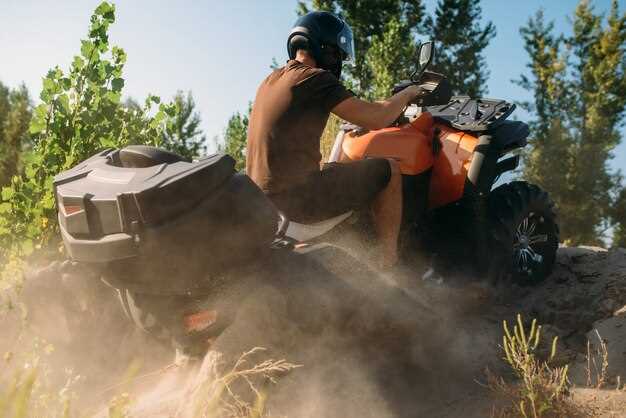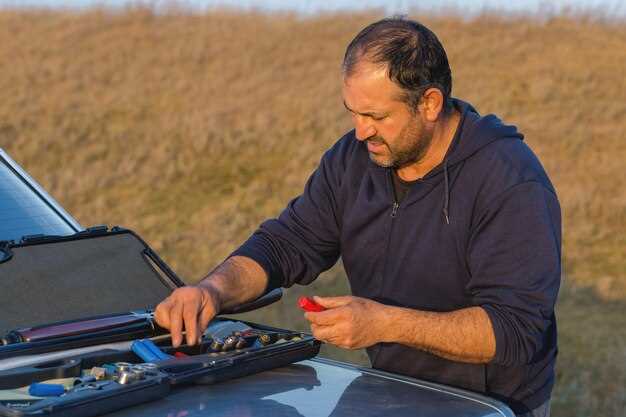
Riding an all-terrain vehicle (ATV) in the scorching heat of the desert can be an exhilarating experience, but it also poses unique challenges. One of the most critical factors to consider is the risk of overheating. High temperatures, combined with the demanding terrain, can put immense stress on your ATV’s engine and other components. Proper preparation is essential to ensure a smooth and enjoyable ride.
To begin with, understanding how desert conditions affect your ATV’s performance is vital. Hot air can lead to decreased engine efficiency, while the rough, often rocky terrain demands more from your vehicle’s suspension and tires. Regular maintenance checks, focusing on key systems, will help mitigate the chances of encountering problems while riding in such extreme environments.
Equipping your ATV with the appropriate gear and making necessary modifications can significantly improve its ability to handle the heat. From choosing the right oil designed for high-temperature conditions to installing temperature gauges, taking proactive steps can prevent overheating and ensure your ATV remains reliable during your adventures in the desert.
Choosing the Right Coolant for Desert Riding

Selecting the appropriate coolant for your ATV is crucial when preparing for desert riding. The harsh conditions of the desert, characterized by extreme heat and limited moisture, can lead to serious risks of overheating. Therefore, choosing a coolant formulated specifically for high-temperature environments is essential.
In the desert, the coolant must have a high boiling point and low freezing point, allowing it to remain effective even during the hottest days. Most standard coolants are not equipped to handle the severe temperatures that a desert environment presents, which can lead to engine failure if not properly addressed.
Look for coolants that contain additives designed to enhance thermal stability and corrosion resistance. These features not only help in regulating the engine temperature but also prolong the life of your ATV’s cooling system. A mixture that includes ethylene glycol or propylene glycol is often recommended for high-performance engines operating in extreme heat.
It is also essential to regularly check and maintain the coolant levels, as evaporation can be accelerated in a hot desert climate. Always ensure that the coolant is topped off and inspected for any signs of contamination or degradation, as these can adversely affect the performance of your ATV.
Investing in the right coolant will safeguard your vehicle against overheating, ensuring a smooth and exhilarating riding experience through the desert terrain.
Adjusting Tire Pressure for Optimal Performance on Sandy Terrain
When riding your ATV in hot desert conditions, one of the most crucial adjustments you can make is to the tire pressure. On sandy terrain, the right tire pressure can significantly impact your vehicle’s performance and handling. Lowering the tire pressure increases the tire’s footprint, providing better traction and control on soft sand. This adjustment helps prevent the ATV from sinking into the sand and enables smoother navigation through challenging conditions.
However, it is essential to find a balance. While lower tire pressure improves traction, excessively low pressure can lead to overheating and tire damage. As the tire pressure decreases, the heat generated from friction can increase, leading to potential blowouts or failures. Therefore, it is vital to monitor the temperature of your tires during your ride.
Typically, for sandy terrains, a tire pressure of around 5 to 8 PSI is recommended. Be sure to test this adjustment in a controlled environment before tackling more challenging landscapes. This ensures that your ATV performs optimally without compromising your safety.
Before your trip, check your owner’s manual for recommended tire pressure and consider adjusting it based on the conditions you’ll face. If you’re uncertain, start with a conservative pressure and adjust as you gain more experience on sandy trails.
Maintaining Your ATV’s Air Filter to Prevent Overheating

The air filter of your ATV plays a crucial role in ensuring optimal performance, especially in hot desert conditions. A clean air filter allows for proper airflow to the engine, which is essential for maintaining the right fuel-to-air ratio. When riding in dusty and arid environments, the air filter can quickly become clogged with dirt and debris, leading to reduced engine efficiency and potential overheating.
To prevent these issues, it’s important to check and maintain your air filter regularly. Start by examining the filter for any visible signs of dirt or damage. If the filter appears dirty, it should be removed and cleaned. Most filters can be washed with soap and water, followed by thorough drying before reinstallation. Always refer to your ATV’s manual for specific cleaning instructions and recommendations.
In desert conditions, consider using a pre-filter or a filter wrap designed to block larger particles while allowing airflow. This additional layer can extend the life of your air filter and improve overall engine performance. Additionally, check the filter more frequently during extended rides in dusty environments, as frequent maintenance can significantly reduce the risk of overheating.
Regularly replacing the air filter is another critical aspect of maintenance. Depending on your riding frequency and the level of dust exposure, a replacement schedule may be necessary. A fresh air filter will ensure that your engine receives adequate air supply, reducing the chances of overheating and improving your ATV’s longevity.
By prioritizing air filter maintenance, you can enhance your riding experience and prevent overheating, ensuring that your ATV performs at its best in challenging desert conditions.
 Skip to the content
Skip to the content 